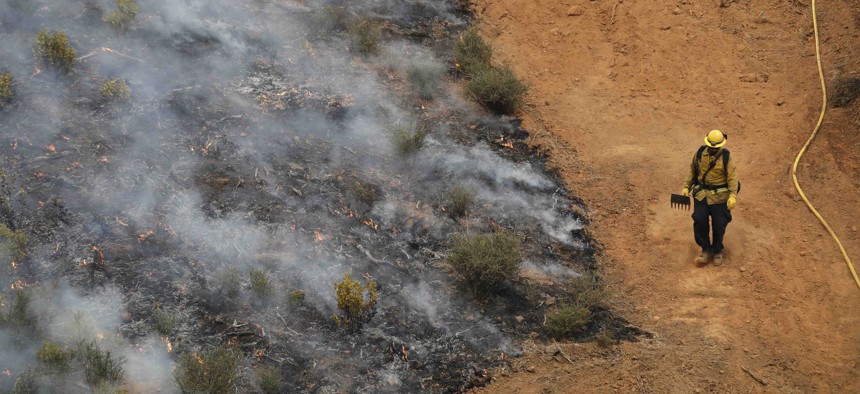Ratings Agency Finds Evidence Wildfires Aren’t Devastating Local Government Finances

A firefighter walks along a containment line while battling a wildfire Saturday, July 28, 2018, in Redding, Calif. AP Photo/Marcio Jose Sanchez

Connecting state and local government leaders
Tax bases and unemployment figures appear to be holding strong against the blazes.
The financial health of localities affected by wildfires have shown signs of strength despite the difficulties and destruction the blazes have caused, according to a credit ratings agency.
S&P Global Ratings found that assessed property values and unemployment rates have for the most part improved in certain jurisdictions affected by fires during the past year.
The ratings agency also says this year’s fires have not led to any credit downgrades for local governments.
“We find that federal and state programs and fiscal backstops have helped with both immediate fiscal needs and the longer-term path to recovery in the wake of fires,” an S&P report notes.
But it also cautions that any data on the fires' long-term economic fallout will take longer to emerge.
The ratings agency rates debt for 33 local governments in five states that have been dealing with fires.
For instance, Washoe County, Nevada and a school district there together have $756 million in outstanding debt. They were in the path of the Perry Fire—north of Reno and now contained.
Some of the most destructive fires this summer have been in California. These include the Carr Fire, near Redding, which destroyed upwards of 1,000 residences, and the Mendocino Fire Complex which is the largest fire to ever burn in the state, scorching over 410,000 acres.
Fires are burning in other states as well, including Colorado, Oregon and Washington. The number of active large fires as of Wednesday was 111, according to the National Interagency Fire Center. Evacuation orders were in place in response to 15 of the fires.
S&P looked at assessed property value changes between fiscal years 2018 and 2019 for 24 school districts, in six California counties, that had at least some fire damage last year. They chose school districts because their boundaries include areas outside of municipalities.
What they found was that 63 percent of the districts with fires during 2017 showed assessed value growth above 2 percent, while 29 percent had stable assessed values, or growth of less than 2 percent. Two school districts saw assessed values decline.
“Likewise, the six counties' already low unemployment rates dropped by slightly less than a percentage point on average in June 2017 to June 2018 to 2.9%,” the report adds.
It goes on to highlight Santa Rosa, California, which lost roughly 3,000 homes in last year’s Tubbs Fire. In November, voters there will decide on a local ballot measure to authorize up to $124 million in bonds to help bolster affordable housing, including by aiding victims of the fire.
National Interagency Fire Center figures show that the 10-year, year-to-date average for acres burned by wildfire in the U.S. is about 5 million acres. So far this year, 6.1 million acres have burned.
Bill Lucia is a Senior Reporter for Government Executive's Route Fifty and is based in Washington, D.C.

NEXT STORY: Looking for ‘Win-Win’ Approaches to the Amazon HQ2 Deal





